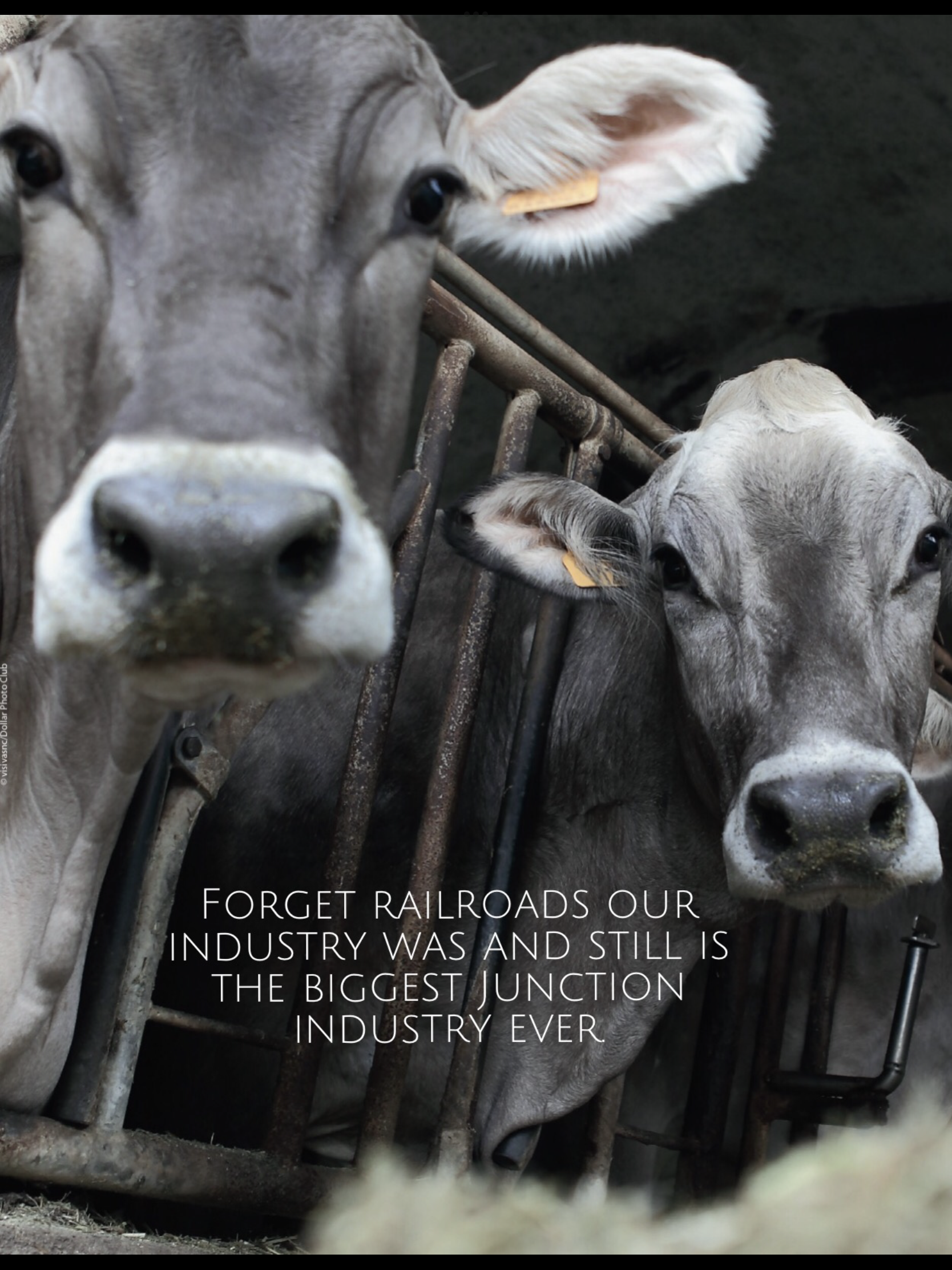The Globe and Mail Once had an amazing reporter, who is from the Junction triangle, and Rd primarily sports contact when he wrote about his home community he really got it right here is an example of his wonderful wedding about Junction’s, stockyards
James CHRISTIE The Globe and Mail
Dec 30, 1993
A LITTLE HAPPY, A LITTLE Officially, the Ontario Stock Yards cease to exist on ) New Year’s Eve. The last animal will be shooed out of the pens with a whip or an electric prod on Jan. 31. The largest in-city • stockyards in r 0,North America, covering an urban ..,•; ‘area of about 80 hectares, will be replaced by new yards near Alliston. . So ends an era in the life of West Toronto. For nearly a century, the stockyards were an engine of the local economy. At the height of activity about 20 years ago, there were more than 6300 people employed in the vicinity of Keele Street and St. Clair Avenue mainly in the livestock and meatpacking businesses, but those workers and residents also supported restaurants, barber shops, banks, gasoline stations, a tire store and corner groceries. -The privately owned Union Stock Yards were established on the location in 1903. One of the old buildings still bears the faintly readable advertisement for horses, carriages, blankets and whips. In 1944, the private yards were succeeded by the Ontario – Stock Yards, a provincial government agency. The new yards will again be a private operation. The sprawling Ontario yards became an unprofitable victim of the ‘times, says Doug McDonell, general manager of the Ontario Stock Yards.
“There has been a drastic swing in the feed cattle business — numbers of animals have gone down in Ontario, up in Alberta. Also, Ontario farmers have cut out middle steps by driving their beasts directly to meat-packing plants. The processing plants such as Canada Packers have themselves downsized and consolidated their operations in times of recession. Toronto Councillor Betty Discro, who is also chairwoman of the city’s economic development committee, says the 80 hectares (200 ‘acres) available for redevelopthent is shared by. three owners: the Ontario government,. Canada Packers Ltd. and CP Rail. “Everyone’s a little happy and a little sad to see the stockyards go. The province, on it’s 35 acres, wants to put a couple of huge warehouse stores, and the one furthest along in planning is Aikenhead’s [hardware], where there will be up to 400 jobs. “Canada Packers has about 100 acres and is talking about affordable-ownership housing. Some of the residents are upset because they think it will be a social housing ghetto, but these will be ownership residences, not rentals. The CP Rail land would be for the kinds of small businesses already in the area, like small food processing companies: We hope it will put some life in the area. But it isn’t what it used to be for employment opportunities.”
here is another post on the closing with more historical detail.
Union Stock yards Co. Ltd. 1903 to 1993 90 years in the Junction.


